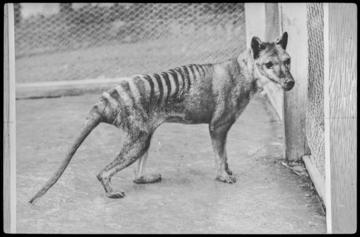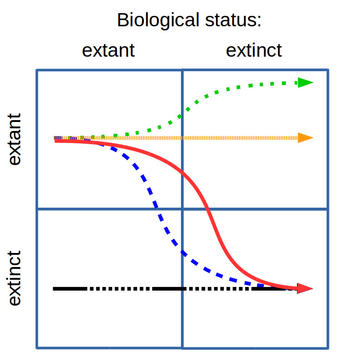
Photo by Ben Sheppard
New research involving researchers from the University of Oxford’s Department of Zoology, and published today in the journal Trends in Ecology & Evolution, explores the phenomenon of societal extinction.
Societal extinction is the loss of species from our collective memory and attention. Species can disappear from our societies, cultures and discourses at the same time as, or even before, they are made biologically extinct by various human actions.
An international and interdisciplinary group of scientists found that whether a species will become societally extinct depends on many factors. These can include its charisma, its symbolic or cultural values, whether and how long ago it went extinct, and how distant and isolated its range is from humans.
“Societal extinction occurs not only in extinct species, but also in those species still living among us, often due to social or cultural changes, for example the urbanization or digitization of society, that can radically change our relationship with nature, and lead to the collective loss of memory.”
Dr Diogo Verissimo
One example the researchers give is the replacement of traditional herbal medicine by modern medicine in Europe. This is believed to have degraded general knowledge of many medicinal plants, causing them to become societally extinct.
As more and more species are becoming threatened or extinct, they also become isolated from people. This leads to the extinction of experience – the progressive loss of our daily interactions with nature. As time passes such species may fully fade from people’s memory.
For example, studies conducted among communities in southwestern China and Indigenous people in Bolivia have shown loss of local knowledge and memory of extinct bird species.

Main types of trajectories of societal extinction
The opposite can also occur, however. "Species can also remain collectively known after they become extinct, or even become more popular", explains Uri Roll, researcher at the Ben-Gurion University of the Negev, another co-author of the study. "However, our awareness and memory of such species gradually becomes transformed, and often becomes inaccurate, stylized or simplified, and disassociated from the actual species".
For example, after the Spix's Macaw became extinct in the wild, children from local communities within its former range incorrectly believed that this species resides in Rio de Janeiro, because of its appearance in the animated movie ‘Rio’.
"It is important to note that the majority of species actually cannot become societally extinct, simply because they never had a societal presence to begin with", says Ivan Jarić, lead author of the study and researcher at the Biology Centre of the Czech Academy of Sciences. "This is common in uncharismatic, small, cryptic, or inaccessible species, especially among invertebrates, plants, fungi and microorganisms - many of which are not yet formally described by scientists or known by humankind. Their declines and extinctions remain silent and unseen by the people and societies."
“Societal extinctions can affect conservation efforts aimed at protecting biodiversity, because it can diminish our expectations of the environment and our perceptions of its natural state, such as what is the standard or relatively healthy.”
Dr Josh Firth
Further research will now assess how societal extinctions can produce false perceptions of the severity of threats to biodiversity and true extinction rates, and diminish public support for conservation and restoration efforts, such as reintroductions of Eurasian beaver to the UK.
Ivan Jarić added "Societal extinction can reduce our will to pursue ambitious conservation goals. For example, it could reduce public support for rewilding efforts, especially if such species are no longer present in our memory as natural parts of the ecosystem."
To read more about this research, published in Trends in Ecology & Evolution, please visit: https://doi.org/10.1016/j.tree.2021.12.011